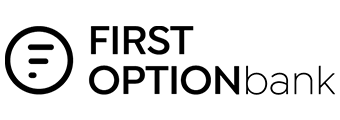A survey by Colonial First State found 57% of the 11 million Australians receiving their 'Stage two' personal income tax cuts - the equivalent of almost $40-$50 a week extra for low and middle-income earners - planned to save it.
Comparatively, only 22% said they intended to spend the extra money, despite the rationale for bringing forward the tax cuts being to stimulate spending and boost economic recovery.
Need somewhere to store cash and earn interest? The table below features savings accounts with some of the highest non-introductory and introductory interest rates on the market.

- Bonus variable rate for the first 4 months on balances up to $250k and high variable ongoing rates.
- No fees and no monthly requirements to earn interest.
- Easily open an account online in 3 minutes.
Nearly a fifth (17%) meanwhile said they would put the extra money towards their mortgage repayments - good news perhaps for mortgages still in deferral - while 16% planned to invest in the stock market with it.
Only 11% said they planned to use their tax savings to pay off high interest debt such as credit card and buy now pay later accounts.
Colonial First State General Manager Kelly Power said the tax cuts would still provide a much-needed boost to the economy.
"For many Australians hit hard by the Coronavirus-led recession, the personal income tax cuts brought forward by the government in this year’s Federal Budget have been well received, alongside a range of other measures, as much needed support," Ms Power said.
“We know that a lot of Australians have been doing it tough and the focus for many has been on navigating the current uncertainty.
"Whether Australians decide to save or spend, it’s about being savvy about what you use the extra cash for. A little can go a long way and if used wisely, the income tax cuts can provide an additional boost to your overall financial position."
However, Ms Power also said Australians should begin to think about rebuilding their wealth moving forward.
Rebuilding super not a priority
2020 has been a tough year for superannuation, with the government's early access to super scheme in response to the coronavirus seeing more than $35 billion withdrawn at the time of writing.
More than 3.4 million different Australians have used the scheme at an average of $7,400 each, and over the June quarter, the total value of Australian super assets fell for the first time as Aussies raced to raid their retirement funds.
While most withdrawals were made out of necessity, others did so to spend on discretionary items like clothing, to pay off debts, or even to fund gambling expenditure.
Despite 16% of respondents admitting to withdrawing from their super, only 6% of respondents said they planned to use their extra income to top up their super, making it the least popular option.
“The research indicates that those who have needed to access super early as a way of surviving income loss, particularly younger Australians, are not making rebuilding their superannuation a priority," Ms Power said.
“As we begin to emerge on the other side of the pandemic, it’s important to start thinking about the long-term impact your super withdrawal could have on the quality of your retirement."
In its super withdrawal estimator calculator, ASIC's MoneySmart found someone withdrawing $10,000 in their twenties could result in them being up to $25,000 worse off when they retire at 67.
Withdrawing the full $20,000 would make them $50,000 worse off.
$10,000 early super withdrawal
|
Age |
Years to 67 |
The estimated reduction in balance |
|
20 |
47 |
$26,436 |
|
30 |
37 |
$21,516 |
|
40 |
27 |
$17,512 |
|
50 |
17 |
$14,253 |
Source: ASIC Moneysmart
"Seemingly small decisions now could have a big effect on the kind of retirement you’ve always dreamed of," Ms Power said.
“Everyone’s circumstances are different so whether you decide to spend it, use it to pay down debts, build up savings or make super contributions, it’s important Australians put the money towards what matters to them."
Photo by Caleb Martin on Unsplash








 Denise Raward
Denise Raward

 Harry O'Sullivan
Harry O'Sullivan
 Emma Duffy
Emma Duffy
 William Jolly
William Jolly

